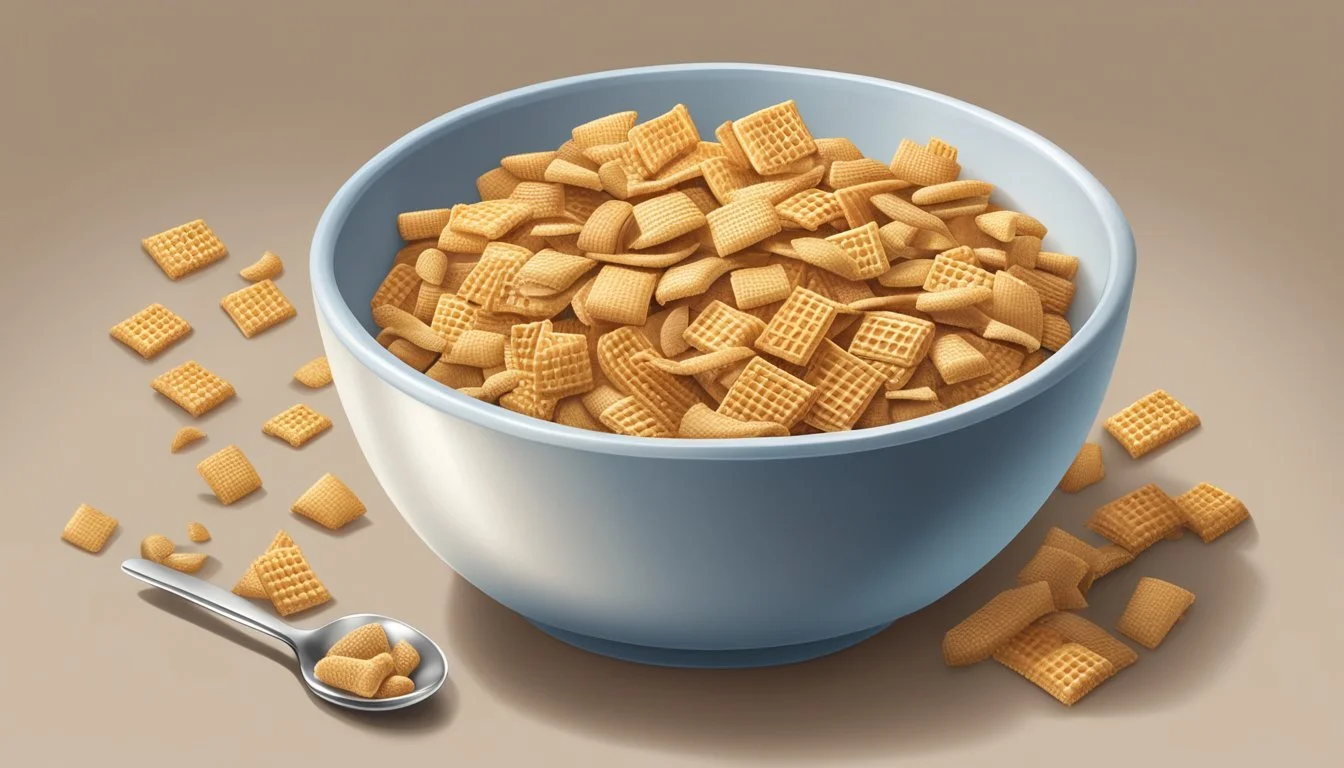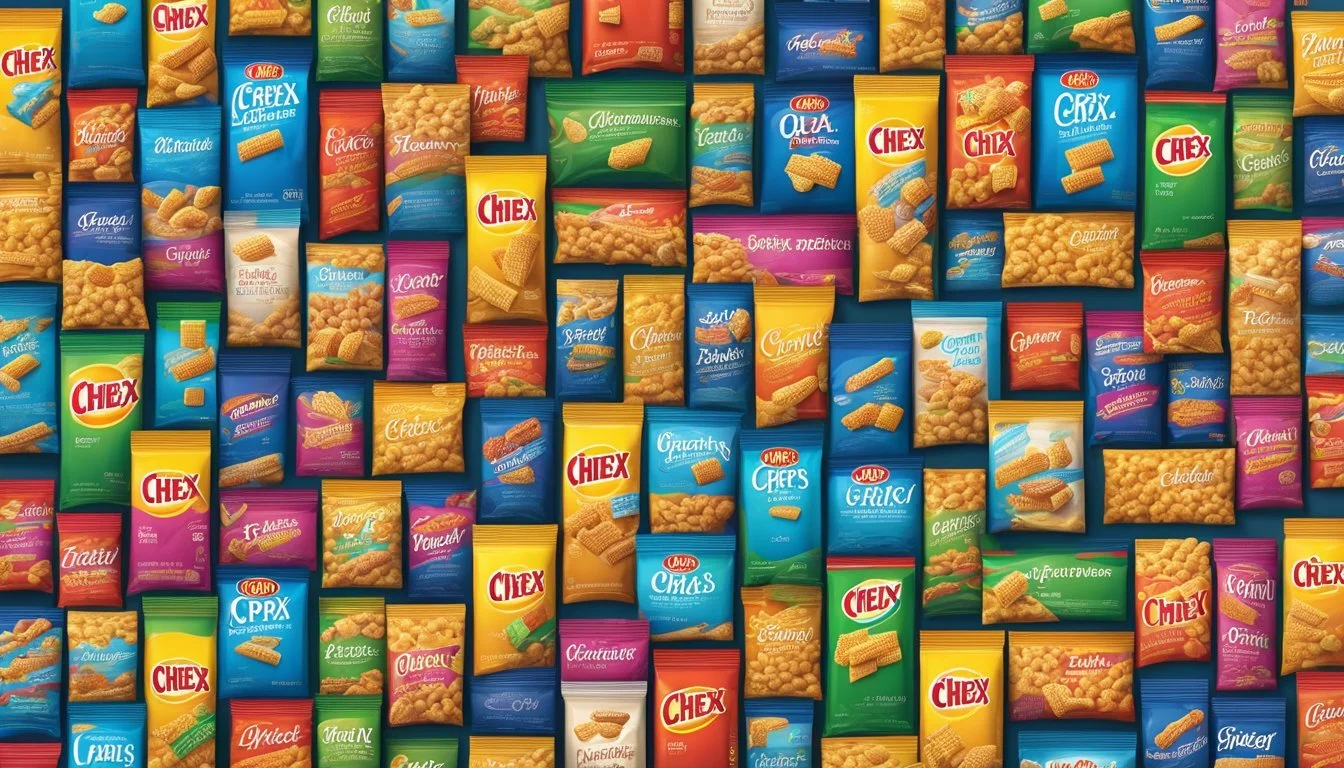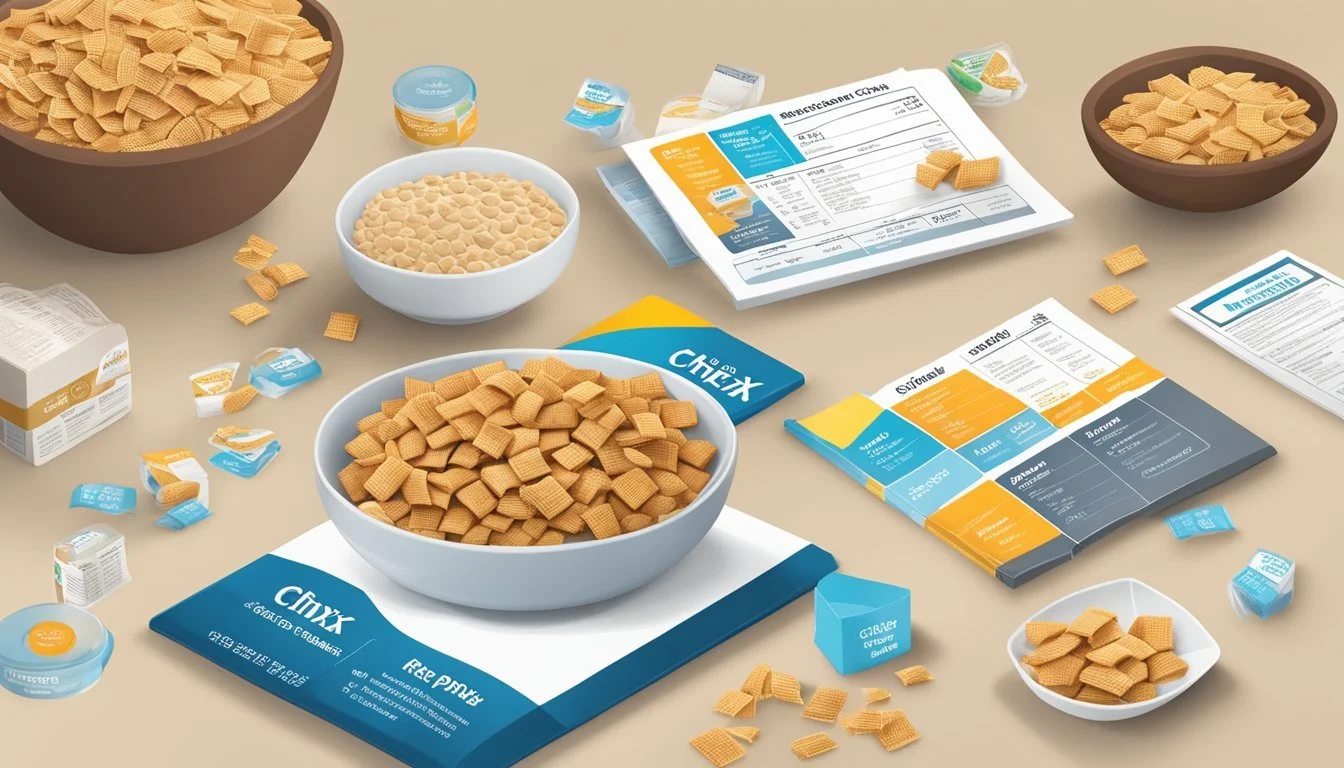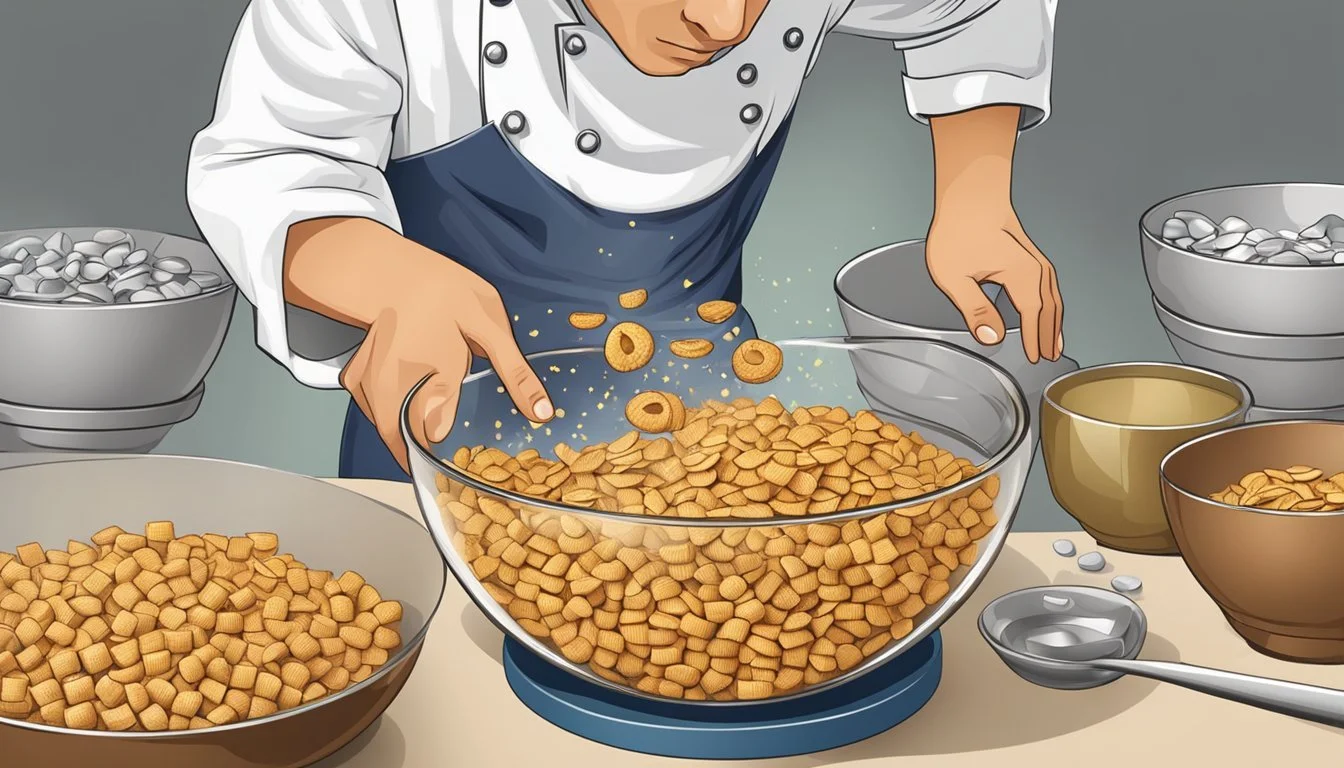Chex vs Crispix
Comparing Two Popular Cereals
This Article is Part of Our Breakfast Cereal Guide with Details on Chex Nutrition and Crispix Nutrition
When deciding between Chex and Crispix, several factors could influence your choice. Both cereals offer distinct textures and nutritional profiles, which might cater to different dietary preferences and taste preferences. Chex, available in larger, crispy pieces, tends to have a higher protein content per serving compared to Crispix.
Crispix, with its smaller, lighter pieces, might appeal to those looking for a slightly lower calorie and fat option. It also contains 21 grams of complex carbohydrates per serving, just slightly less than Corn Chex but more than Wheat Chex. These differences can play a role in your decision depending on your nutritional goals.
Examining the variety of flavors, Chex often provides more options, including wheat, corn, and rice varieties, which might offer something for everyone in the family. Crispix, on the other hand, is typically found in its original form, making it a straightforward, no-frills choice for consumers.
History and Manufacturers
Chex and Crispix are popular cereals with distinct histories and manufacturers. Chex is produced by General Mills, while Kellogg's is behind Crispix.
General Mills and Chex
Chex, an American breakfast cereal, is currently manufactured by General Mills. Originally known as Shredded Ralston, Chex was first produced in 1936 by Ralston Purina.
In 1950, it was rebranded as Chex. The popular variants include Rice Chex, Corn Chex, and Wheat Chex.
In 1994, the Chex brand went to Ralcorp, a corporate spinoff of Ralston Purina. Eventually, in 1997, General Mills acquired Chex.
Under General Mills, Chex gained significant popularity and is now a staple in many households. Chex’s versatility makes it a frequent choice for recipes like Chex Mix.
Kellogg's and Crispix
Crispix, introduced by Kellogg's in 1983, was created to challenge the dominance of Chex. The cereal is unique with crispy rice on one side and crunchy corn on the other.
Initially developed to take on Chex's $125 million market hold, Crispix achieved sales of $65 million by 1987. It was designed to compete directly with Chex by offering a unique texture and flavor profile.
Crispix's distinct hexagon shape and dual-grain composition set it apart in the cereal market. Kellogg's continues to manufacture Crispix, maintaining its presence as a favored choice among breakfast cereals.
Nutritional Profiles
Chex and Crispix offer distinct nutritional benefits and downsides. Particularly, their macronutrient compositions, such as protein and fat, are crucial for those seeking balanced diets.
Health Benefits
Chex and Crispix each present unique health benefits. Chex tends to have a higher protein content, which is beneficial for muscle maintenance and growth.
On the other hand, Crispix is lower in calories and fat, which may be preferable for those looking to manage their weight. The differences in carbohydrate content also matter; Crispix has slightly fewer complex carbohydrates, which can impact energy levels throughout the day.
Caloric Content
Caloric content is an important factor for those monitoring intake. Chex cereals generally have a higher calorie count per serving compared to Crispix.
For instance, Rice Chex contains around 110 calories per serving. In contrast, Crispix offers slightly fewer calories, often around 100 calories per serving. These differences can add up over multiple servings.
Protein and Fat
The macronutrient profiles between Chex and Crispix reveal significant variances. Chex cereals usually have a higher protein content. For example, Wheat Chex offers about 3 grams of protein per serving.
Crispix typically contains about 2 grams of protein per serving. On the fat front, Crispix is often leaner, containing negligible fat, whereas Chex variants like Corn Chex may have up to 1 gram of fat per serving.
Sodium and Sugars
In terms of sodium, Chex cereals, particularly flavored varieties like Cinnamon Chex, have higher content, sometimes up to 250 mg per serving.
Crispix generally contains less sodium at around 190 mg per serving. Regarding sugars, Cinnamon Chex contains approximately 8 grams of sugar per serving, while Crispix has a lower sugar content, typically around 3 grams per serving.
Vitamins and Minerals
Both cereals are fortified with vitamins and minerals, though the specific nutrients can vary. Chex cereals often provide a broader range of B vitamins, iron, and zinc.
Crispix, though slightly lower in some vitamins, still offers essential nutrients like folic acid and vitamin B12. This fortification ensures they contribute to overall nutritional requirements, supporting various bodily functions.
Cereal Ingredients
The choice between Chex and Crispix can be influenced by their specific ingredients, including whole grains, fiber, sweeteners, and any additives or preservatives. Understanding these components is essential for making an informed decision.
Whole Grains and Fiber
Whole grains are an essential part of both Chex and Crispix, contributing to the cereals' nutritional value. Corn Chex primarily uses cornmeal, while Rice Chex and Wheat Chex use rice and whole wheat, respectively.
Crispix combines both rice and corn for variety. The inclusion of these whole grains provides important nutrients like fiber, which aids in digestion. For example, Wheat Chex has a higher fiber content compared to Crispix, which contains less dietary fiber.
Sweeteners and Flavors
Sweeteners and flavors play a significant role in the taste profile of these cereals. Chex cereals often use sugar and molasses for sweetness. Some varieties, such as Cinnamon Chex, contain higher amounts of sugar and additional flavorings to enhance taste.
Crispix, on the other hand, tends to have a milder flavor, usually sweetened with a small amount of sugar and brown sugar. The flavoring approach in both cereals affects their overall palatability and nutritional aspects, influencing sugar intake.
Preservatives and Additives
Preservatives and additives are included in cereals to extend shelf life and improve texture. Chex cereals might use preservatives like BHT (butylated hydroxytoluene) to maintain freshness.
Additionally, some flavors, such as Cinnamon Chex, may contain added colors and flavors to enhance appearance and taste. Crispix typically avoids artificial colors but may still contain preservatives to ensure longevity. Both cereals may also be fortified with vitamins and minerals like iron and zinc to boost their nutritional profile, providing essential nutrients not naturally present in whole grains.
Serving and Dietary Recommendations
Both Chex and Crispix offer convenient and nutritious options, but serving sizes and dietary implications vary.
Recommended Serving Sizes
Chex and Crispix cereals typically recommend a serving size of 1 cup. Chex has a serving weight of approximately 31 grams, whereas Crispix is around 33 grams per cup. Each option provides an easy-to-measure portion, helping to maintain dietary balance.
Consumers following FDA recommendations can use these serving sizes to meet daily carbohydrate and protein needs effectively. Both cereals fit well into a standard breakfast routine, but it's essential to be mindful of portion control to avoid excessive calorie intake.
Dietary Considerations
Chex offers significant variations in dietary suitability. Many Chex options, unlike Crispix, are gluten-free, making them safe for individuals with celiac disease or gluten sensitivities.
Both cereals are typically low in fat, with Chex having slightly more protein per serving compared to Crispix. Chex also tends to have higher sodium content, which is something to consider for those monitoring their salt intake.
Both cereals can be included in a kosher diet, enhancing their versatility for various dietary needs. When selecting between the two, personal nutritional goals and dietary restrictions should guide the decision.
Varieties and Flavors
Both Chex and Crispix offer unique flavor profiles and product lines that cater to a wide range of taste preferences.
Extended Product Lines
Chex has a diverse range of product lines including Chex Mix, a popular snack mix that combines various flavors and textures. It encompasses sweet and savory flavors, like Cinnamon Chex, Vanilla Chex, and Chocolate Chex. These various mixes provide a substantial variety of taste experiences.
Moreover, Chex offers many gluten-free options, allowing those with dietary restrictions to enjoy the cereal. On the other hand, Crispix maintains a more focused product line. Crispix is primarily available as a breakfast cereal with its unique combination of crispy rice on one side and crunchy corn on the other. This simplicity appeals to those who prefer a straightforward flavor without any additional components.
Comparison of Flavors
Chex boasts a wide array of flavors, ensuring there’s something for every palate. Popular Chex flavors include Cinnamon Chex, Vanilla Chex, and Chocolate Chex. The versatility of Chex is also evident in the Chex Mix varieties, featuring flavors such as Zesty Taco and Ghost Pepper, each bringing a distinctive taste to the table.
In comparison, Crispix emphasizes its original flavor, which is a blend of rice and corn. The dual-grain composition offers a balanced taste and texture, appealing to those who enjoy a less complex and more traditional cereal flavor. Both cereals cater to different preferences, with Chex providing a wider flavor variety and Crispix focusing on its unique dual-grain formula.
Consumer Information
Chex and Crispix, both popular breakfast cereals, vary in terms of price, availability, and consumer reviews. Understanding these factors can help consumers make informed choices.
Pricing and Availability
Chex and Crispix are both widely available across various supermarkets and online retailers. Chex typically comes in a variety of flavors including Corn, Rice, and Wheat Chex, which may affect the price. On average, a box of Chex costs between $3.50 to $4.50 depending on the location and size of the box.
Crispix, produced by Kellogg’s, generally offers a single flavor which is usually listed at a comparable price point to Chex, though sometimes it might be slightly more affordable due to fewer flavor options. Promotions and sales during holiday seasons can lead to further reductions in price for both cereal brands.
Cereal Ratings and Reviews
Chex is often praised for its crunchy texture and variety of flavors. Consumers appreciate its higher protein content, especially in the Wheat Chex variant, making it a popular choice for those looking for a nutritious breakfast option. However, some reviewers note that certain flavors, such as Cinnamon Chex, are higher in sugar and sodium.
Crispix has garnered positive reviews for its light and crispy texture, appealing to those who prefer a lighter cereal. Feedback often highlights its lower calorie and fat content per serving, making it attractive to health-conscious shoppers. The consistent taste and quality also contribute to its favorable ratings, though some consumers miss having more flavor options.
Comparison Table: Chex vs. Crispix
Aspect Chex Crispix Texture Crispy, Crunchy Light, Crispy Protein Content Higher Lower Flavor Options Multiple (Corn, Rice, Wheat) Single Original Flavor Average Price $3.50 - $4.50 Comparable but sometimes less Calories per Serving Varies by flavor Slightly lower Consumer Ratings Generally positive Generally positive
This breakdown should offer a clear picture for consumers deciding between Chex and Crispix, highlighting key aspects such as price, availability, and consumer feedback.
Culinary Uses
Chex and Crispix are versatile cereals that can be used in a variety of culinary contexts. From savory snacks to sweet treats, both cereals adapt well to different recipes and pairings. Chex often stands out in recipes requiring a sturdier texture, while Crispix’s lighter pieces are best for more delicate applications.
Recipes and Pairings
Chex is commonly used in Chex Mix, a popular snack mix that combines different Chex varieties with pretzels, nuts, and a seasoned butter mixture. This mix is then baked or slow-cooked. It’s perfect for parties or as an everyday snack.
Crispix finds its place in similar contexts but is also frequently used in Muddy Buddies (also known as Puppy Chow). This involves coating Crispix in a mix of melted chocolate, peanut butter, and powdered sugar. It serves as a delicious, sweet treat.
Chex and Crispix can also be enjoyed with milk as a breakfast cereal. Adding raisins, nuts, and fresh fruit enhances their nutritional profile and flavor.
Alternative Uses
Chex and Crispix can be used as crunchy toppings for casseroles and salads. Crushed Chex are often employed as a breading for chicken or fish, offering a gluten-free alternative to traditional breadcrumbs.
Chex is sturdy enough to be incorporated into no-bake bars and cookies, where its texture provides a satisfying crunch. Crispix, with its lighter texture, is more suited for desserts like cereal-based marshmallow treats, providing a delicate crunch.
Both cereals are effective bases for homemade granola, mixing well with oats, nuts, and dried raisins. The cereals’ shapes and textures complement various culinary uses, making them adaptable ingredients in diverse recipes.








